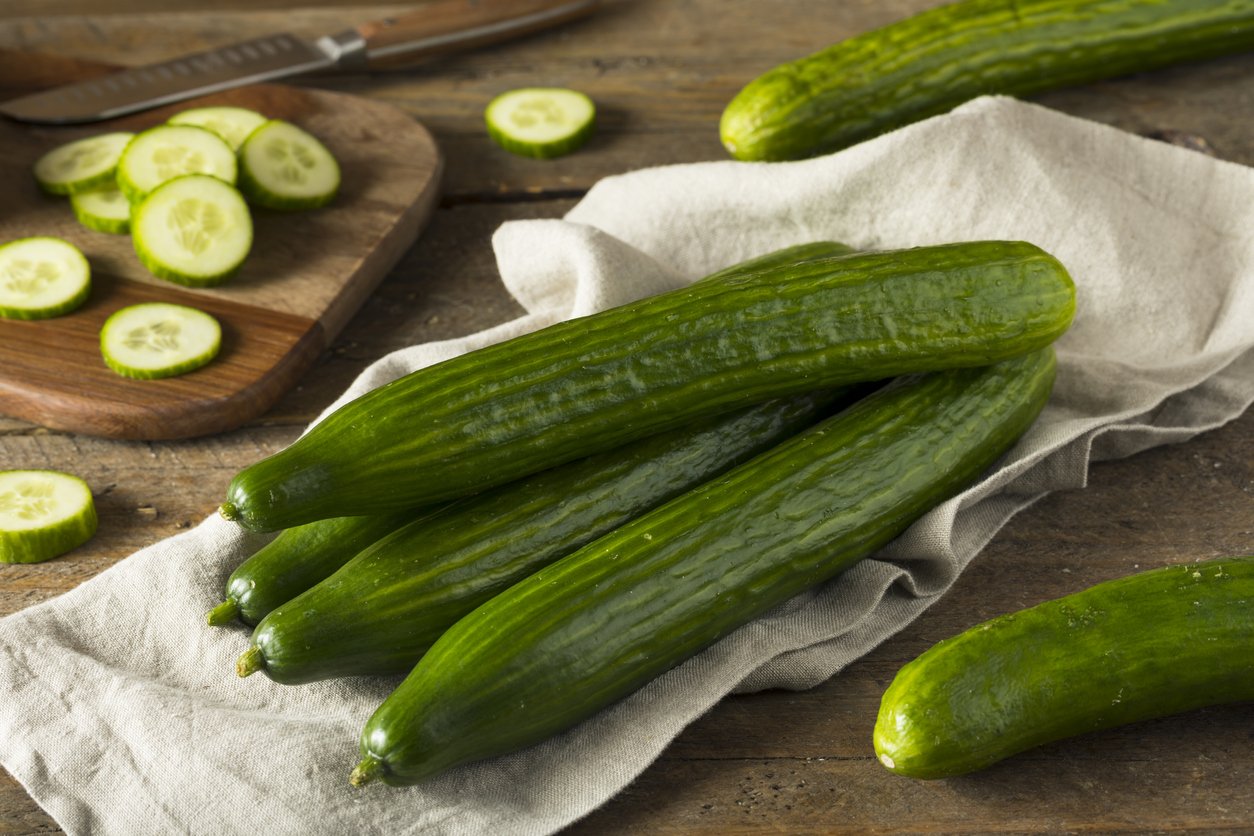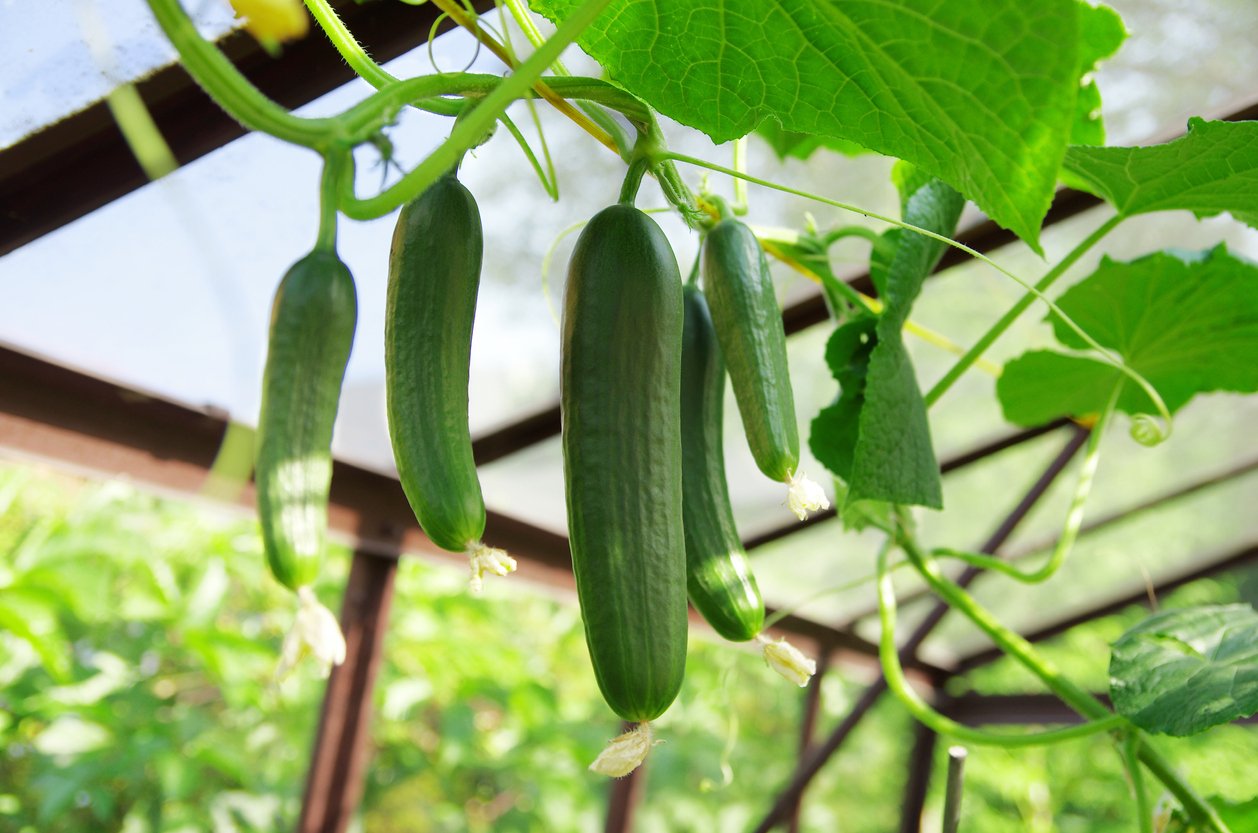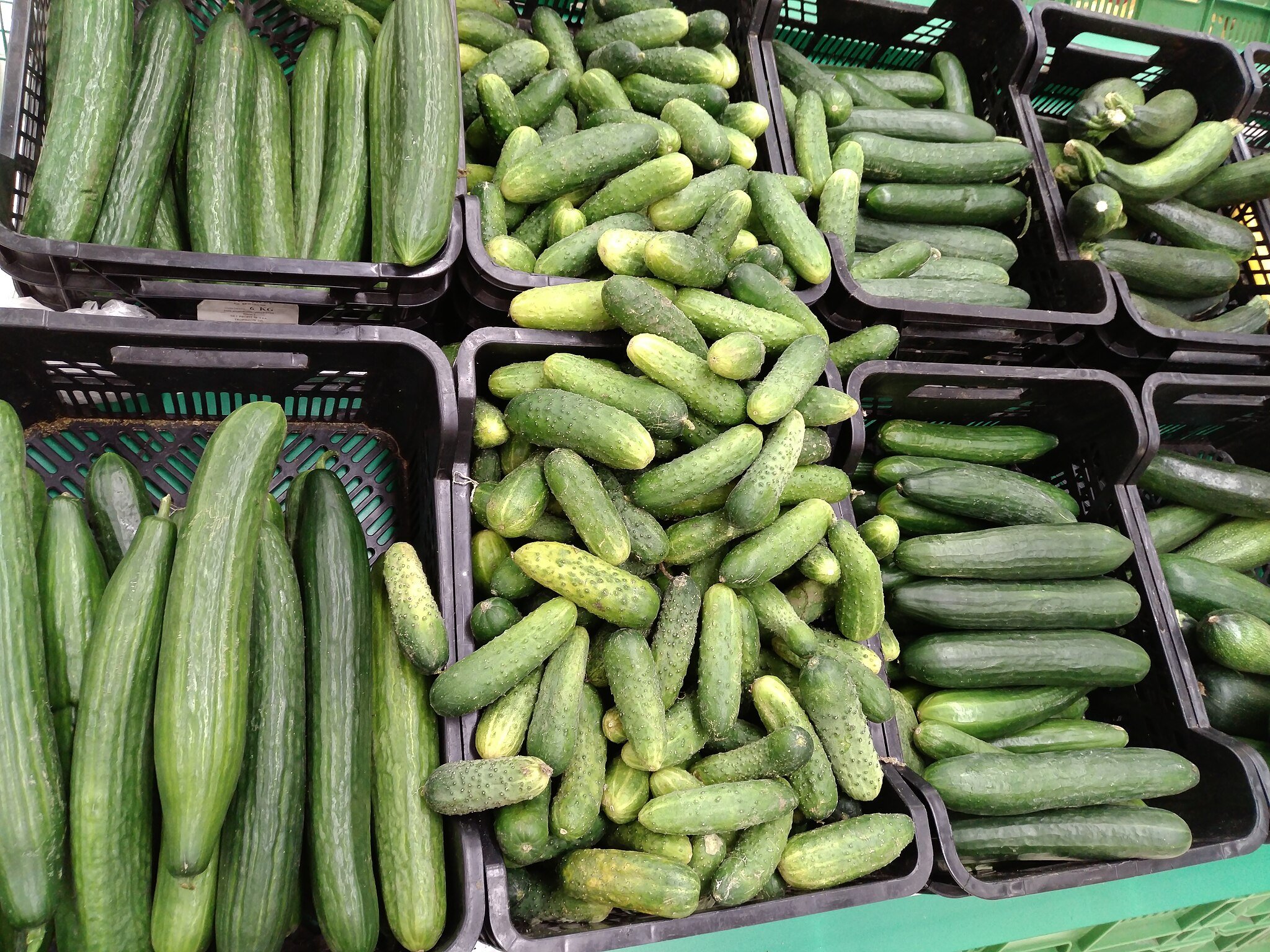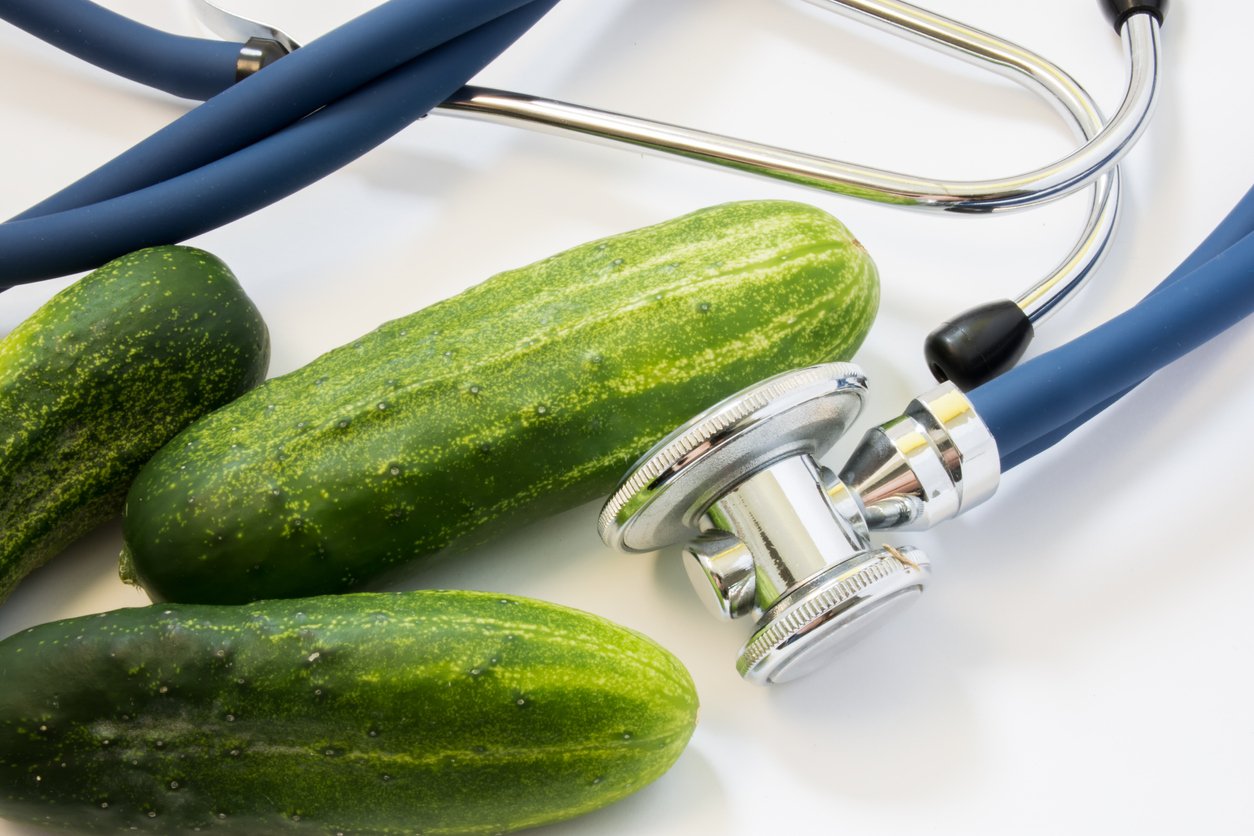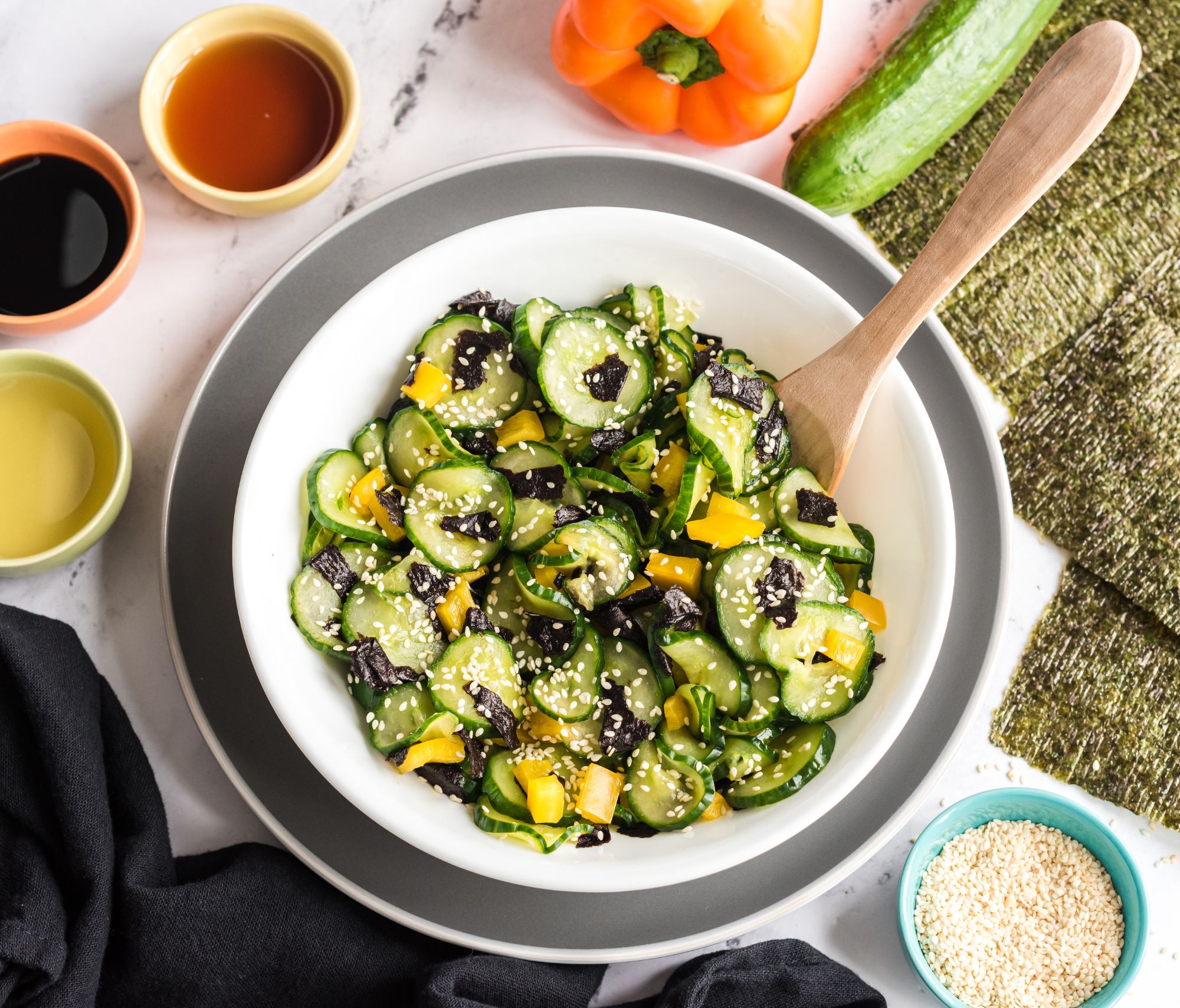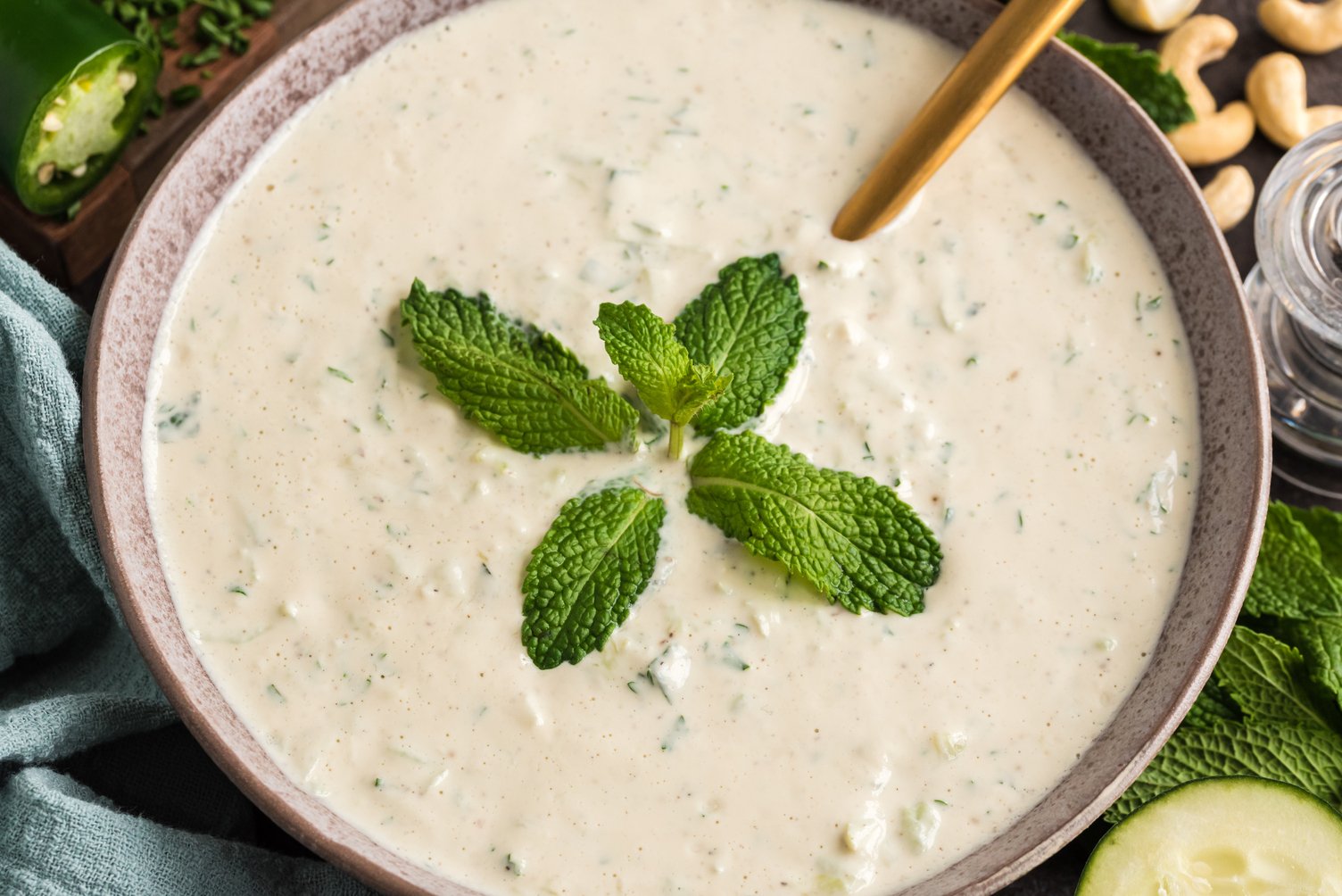Cucumbers are popular worldwide as a refreshing and versatile food. They’re a salad ingredient, a staple of dainty little Victorian sandwiches served at tea parties, a basis of some gazpacho soups, and a hydrating addition to drinks like smoothies and mocktails.
But like iceberg lettuce, cucumbers have gotten a kind of “meh” nutritional reputation. Some folks wonder how it’s possible for such a mild-tasting food that’s mostly water to really provide health benefits.
In this article, we’ll fearlessly dive into the world of the cucumber. We’ll explore the question of whether cucumbers belong in your diet, or whether they should be relegated to stock photos of ladies getting spa treatments with hemp yogurt facials and cucumber eye masks. Are they laden with nutrients, or nothing more than nature’s bottled water?
Interesting Cucumber Facts
The cucumber — or Cucumis sativus, as Roman Emperor Tiberius would have called it (he was such a fan that his terrified gardeners basically invented the greenhouse to keep the emperor in cukes year-round) — is a member of the Cucurbitaceae or gourd family. Sharing the family tree (family vine, really) are other fruits including melons, pumpkins, squash, and true gourds. Members of the Cucurbitaceae family grow happily in climates ranging from temperate to tropical, all around the world.
Native to southern Asia, cucumbers were first cultivated over 3,000 years ago in India, where they go by the Sanskrit name trapusam. Ayurvedic practitioners often used cucumbers for their cooling effects, which include relieving fatigue, burning, and thirst.
Cucumbers are now grown in at least 117 countries. The main producers include China, Turkey, Russia, Ukraine, and Iran. But the US imports most of its cukes from Canada and Mexico. The Canadian ones are almost universally greenhouse grown, which allows them to be the thinner-skinned “burpless” varieties preferred by many US consumers.
Cucumber Types
Cucumbers are technically fruits, although they’re thought of as vegetables because of their more savory flavor. As such, cucumber plants grow as vines or bushes.
Vining varieties can spread along the ground for many feet, making themselves at home not just in the beds where they’re planted but in neighboring beds and paths as well. Some gardeners train them to climb trellises, which not only keeps them from extending horizontally but also raises the fruit above the soil, making them cleaner and easier to pick.
Bush cucumbers are more compact and do well in containers and gardens with limited space. They also tend to produce fewer fruits than their vining counterparts.
From a culinary perspective, we can divide the world of cucumbers into two main types: slicing and pickling.
Slicing cucumbers, such as those that end up in salads, sandwiches, and spas, are good to eat raw. They’re typically six to eight inches long, with smooth skin and white spines.
Pickling cucumbers are smaller and have more seeds and a thicker skin, which allows them to stay crispy through the pickling process. Their spines are either white or black.
If you see a cucumber labeled “burpless,” that’s not a commentary about its table manners. Rather, burpless cucumbers lack cucurbitacin, a bitter compound that’s responsible for many of the fruit’s health benefits. It can also cause indigestion in some folks, which is where the “burpless” label comes from. If you happily digest regular cucumbers, as many people do, there is no reason to choose burpless varieties, unless you’re growing them in a greenhouse. (Some burpless varieties do better in greenhouses.)
Slicing Cucumber Varieties
Some common slicing cucumber varieties include:
- Hot House cucumbers: burpless, elongated, few seeds, crisp flesh, thin skin, and typically wrapped in plastic to retain moisture.
- Armenian cucumbers: long and curling, thin skin, some seeds, mild taste with hints of cantaloupe.
- Lemon cucumbers: round or oval, tennis-ball-sized, yellow to gold skin when ripe, mild taste.
- Persian cucumbers: shorter cylindrical shape, crunchier and less watery than other varieties, full of edible seeds, mild and sweet taste with little bitterness.
Nutritional Facts about Cucumbers
Your body is about 60% water. But before you start bragging about that fact, realize that the cucumber has you beat by a large margin. Most cucumbers are about 95% water, which makes them an excellent food to eat as part of your overall hydration strategy.
However, their high water content doesn’t preclude other nutrients. Cucumbers are a good source of vitamin K1, vitamin A, magnesium, potassium, and manganese. They provide a small amount of fiber (especially if you eat the skin). And they’re rich in antioxidants, including beta-carotene, vitamin C, and flavonoids, which can help reduce inflammation and protect against chronic diseases.
The skin and seeds of many cucumber varieties also contain the bitter compound cucurbitacin, a terpene that may contribute to the fruit’s health benefits.
What Are the Benefits of Eating Cucumbers?
As we’ve seen, Ayurvedic medicine holds cucumbers in high regard — and has for many hundreds of years. But recently, modern science has begun investigating cucumbers’ health benefits as well, coming to many of the same conclusions as Ayurvedic practitioners.
Cucumbers and Digestion
Cucumber seeds have been studied in test-tube and animal experiments to determine if, and how, they can reduce digestive spasms. (Our view on the use of animals in medical research is here.) In one 2021 study, researchers used ethanol alcohol to extract compounds from cucumber seeds and found that several of them acted to reduce digestive (and respiratory) muscle contractions by blocking certain calcium channels.
In 2022, researchers used high-performance liquid chromatography (which has nothing to do with taking color photographs of Olympic swimmers, despite what it sounds like) to identify some specific compounds in cucumber seeds responsible for their antispasmodic effects. These included kaempferol, quercetin, narcissin, and orientin — all flavonoids with antioxidant capabilities.
Are Cucumbers Good for Type 2 Diabetes?
Two of the driving forces behind the development of type 2 diabetes are oxidative and carbonyl stress. I had to look up that second one. And I learned that carbonyl stress is caused by carbonyl compounds such as oxidized fats and proteins.
A 2016 study found that liquid extracts of cucumber fruits were able to block both oxidative and carbonyl stress in the liver cells of extremely stressed rats. In doing so they exerted protective effects against complications typically seen in type 2 diabetes.
Additionally, a 2020 animal study using extracts of both cucumber and its relative Cucurbita maxima showed promising results for protection against diabetes-induced liver and pancreatic damage.
While neither of these studies proves that cucumbers can slow or reverse the progression of type 2 diabetes in humans, they’re both suggestive. As scientists everywhere like to say at the end of their articles, “Further research is needed.”
Cucumber Heart Benefits
If you’re ready for some human studies about the health benefits of cucumbers, I’m right there with you.
Fortunately, there’s an excellent Iranian study from 2016 that evaluated the effects of cucumber seed extract on cardiovascular biomarkers. Forty-seven people with high blood lipids were included in the study, all of whom had a heightened risk of atherosclerosis.
Researchers randomly assigned participants to a capsule a day containing 500mg of the extract or a placebo. After just six weeks, the group receiving cucumber seed extract had significantly lower BMI, triglycerides, and cholesterol (total, LDL, and HDL).
And another rodent study, this one from 2022, identified a mechanism by which cucumber seeds reduced blood pressure and decreased the risk of a heart attack in hypertensive rats. In particular, cucumber seeds may play a crucial role in treating myocardial and vascular disorders through dilating endothelium cells, energy generation, and antioxidant capacity.
Are Cucumbers Good for Inflammation?
The popular phrase “cool as a cucumber” may have some relevance when it comes to bringing down the heat of inflammation in the body. In fact, cucumber seeds have a long history of fighting inflammation in Ayurvedic traditions. Scientists put this ability to the test in 2018 when a Mexican team found that an aqueous cucumber solution was able to reduce inflammatory factors and oxidative stress in human endothelial cells. Additionally, the researchers discovered that the cucumber solution increased the availability of nitric oxide, a crucial compound that signals the endothelium to relax and allow greater blood flow at lower pressure.
Researchers from Italy replicated this finding the same year, showing that cucumber extract reduced the damaging effects on human endothelial cells that had been exposed to inflammatory compounds.
And a 2020 study out of the UK identified a particular compound in cucumbers that appears to play a major anti-inflammatory role. Because its chemical name doesn’t exactly trip off the tongue, it’s better known as doBR1, although it’s still not going to win any nutritional name recognition competitions.
Cucumber Cancer Benefits
A cucumber extract that’s similar to the kind used in some traditional Ayurvedic formulations has been shown to exhibit anticancer activity against several human cancer cell lines due to its antioxidant content.
Additionally, the bitter compound in cucumbers, Cucurbitacin C, shows promise as a potential anticancer agent. A study using in vivo and in vitro techniques found Cucurbitacin C induced apoptosis in mice and inhibited cancer cell growth.
Cucumber Side Effects and Potential Concerns
While cucumbers are generally an awesome and healthy food, there are a few things to keep in mind when thinking about including them in your diet.
Pesticides on Cucumbers
Are cucumbers a food that you should consume only if they’re organic? Not according to the Environmental Working Group (EWG), which ranks them as #20 on their list of the most pesticide-contaminated foods — keeping them out of the “Dirty Dozen.”
Consumer Reports agrees. Their guide to pesticides in produce rated conventional cucumbers as “very good” and organic as “excellent.” This suggests that if your food budget is constrained, there are other foods that are a higher priority to source organically. Of course, if you have access to organic cucumbers and can afford them, choosing organic can benefit farmworkers and the environment.
And of the 75 different types of pesticides commonly used on cucumbers, many can be removed by peeling. The downside of this strategy is that it also removes much of the fiber along with a large number of vitamins and minerals that are found in the skin.
Vitamin K in Cucumbers
Cucumbers contain a moderate amount of vitamin K, an essential nutrient that helps with blood clotting and bone health. Individuals who are taking blood thinning medication should monitor their vitamin K intake to make sure they have about the same amount every day.
This is because blood thinners, also known as anticoagulants, work by interrupting the clotting pathway to prevent blood clots from forming, while vitamin K helps activate clotting factors. So too much vitamin K can counteract the effects of blood thinners and increase the risk of blood clots.
For most people, this isn’t a big issue, and consuming moderate amounts of vitamin K-rich foods like cucumber is generally safe and even beneficial.
Cucumber Indigestion
Cucumbers aren’t universally beloved, however. In some folks, the cucurbitacin in the cucumbers that aren’t “burpless” triggers indigestion, bloating, and gas. There’s even an extreme version caused by overexposure to cross-pollinated plants from the Cucurbitaceae family known as “toxic squash syndrome.” So if you ever bite into a cucumber with an extremely bitter taste, you might want to spit it out (in a classy way, of course) to avoid the possibility of, in extreme cases, nausea, diarrhea, abdominal pain, vomiting, dizziness, and even, in rare cases, hair loss.
However, commercially grown cucumbers and other members of the cucumber family almost never have high levels of cucurbitacin, because, well, there’s not much economic incentive to grow a crop that people have to spit out or risk puking and going bald (the invisible hand of the market at work).
Recipes Using Cucumber
With three bright, unexpected, and scrumptious ways to enjoy fresh and cooling cucumber, you may just find yourself dreaming of the next time you can delight in this versatile vegetable. From a creamy soup to a tangy salad to a velvety dip, these recipes are sure to become some of your plant-based favorites!
1. Chilled Cucumber Avocado Soup
Cucumbers and avocados are two seemingly simple ingredients that when put together create a velvety nourishing soup that is a delight to enjoy! A fun way to enjoy this soup is as an appetizer in shot glasses for your dinner guests. Garnish it with a little paprika and parsley to make it a fancy appetizer soup shot!
2. Sunomono (Japanese Cucumber Salad)
Are you looking to get creative with your surplus of homegrown cucumbers? Give Sunomono a try. Sunomono refers to salads with vinegar and is typically served in small bowls as a side dish or an appetizer. It’s possible to prepare Sunomono using different types of vegetables; however, Japanese cucumbers are among the most commonly used. Tangy, sweet, and slightly sour tastes pair well with the light, hydrating, and refreshing mouthfeel of cucumbers. These cucumbers transform into a delightful appetizer or side dish that is perfect for the warmer seasons!
3. Cucumber Raita
Cucumbers get a touch of razzle-dazzle as a part of this refreshing and creamy condiment. Made with luscious cashew cream, crisp and mouthwatering cucumbers, and plenty of fresh herbs and spices, this dip is a fantastic addition on top of or alongside many of your plant-based favorites!
Cucumbers Are Cool — and Good for You!
Cucumbers are a popular fruit (that we think of as a vegetable) and a good source of vitamin K1, vitamin A, magnesium, potassium, and manganese — as well as important disease-fighting antioxidants. Studies show they’re beneficial for digestion, type 2 diabetes, cardiovascular disease, and inflammation; and they may have anticancer properties.
Grown conventionally, they don’t deliver significant pesticide exposure, which is good news for consumers. Their high vitamin K1 content may be an issue for people who consume lots of cucumbers and also take anticoagulant medication. And some people may experience digestive issues when consuming bitter cucumbers with a high cucurbitacin content.
Overall, however, cucumbers can be a healthy food choice, especially when eaten as part of a balanced and healthy overall dietary pattern.
Tell us in the comments:
-
What are your favorite ways to eat cucumber?
-
Is there a cucumber variety you particularly like?
-
What’s one cucumber recipe you’d like to try next?
Featured Image: iStock.com/bhofack2
